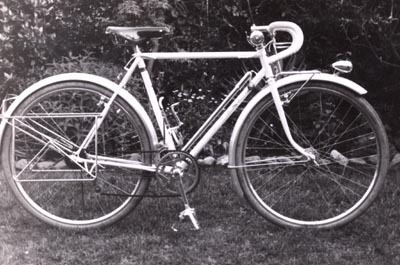Whenever I think about designing something to have a better chance of being contagious, the issue of
authenticity invariably comes up. All things being equal, we’re more likely to tell people about the authentic things in our lives. When was the last time you joined a cause because it was hollow, shallow, and fake? Authenticity matters.
But, what is it? I know it when I see it, hear it, feel it — but what is it? And can it be designed? Or does the act of designing it break it? In other words, can an authentic experience of Paris-ness be designed, or does a designed version of Paris end up feeling a lot like Paris in Las Vegas? Perhaps a way to answer the questions of "what is it?" and "can we design it?" is to borrow a page from the book (or blog?) of John Maeda and endeavor to come up with principles of authenticity. If we can come up with design principles for authenticity, then we’ll have a better understanding of what makes for authentic experiences, as well as the means to design them in a more predictable manner.
The first design principle I’d like to discuss is the idea of a strong point of view. Authenticity, it would seem to me, demands a strong point of view. In other words, a clear sense of what matters. The ability to make choices. A deep understanding of what you are and are not. What does a strong point of view look like? A great example is Jitensha Studio, a Berkeley bicycle shop run by Hiroshi Iimura. Last year the New York Times ran an evocative profile of Jitnesha which contained this ode to a strong point of view from Mr. Iimura:
If a customer wants a component that is not to my taste, I refuse. No brightly colored seats. No neon.
Nothing flashy, nothing impractical. I have to satisfy my own tastes first.
A strong, coherent vision of where things need to go is the bedrock of authenticity, I’d argue. Porsche was a more authentic brand when Porsche was run by a Porsche whose opinions about Porsche-ness could trump any marketing study. Apple is all about a clear point of view, and it’s certainly the most authentic manufacturer of consumer products out there today. Anything Virgin is about an authentic experience of what it feels like to be irreverently original. And so on and so forth.
Thoughts? Am I full of it? What are some other possible principles? Should we catch this train?


I agree with your idea about authenticity. Any company/product/movement that I want to get involed with needs to resonate with my convictions and passions. It’s hard to find companies that have a strong enough vision to stick to thier authentic roots. I imagine that many companies start out with a clear vision and then cater to customers and stockholders thereby compromising some values. Unless, your companies philipohy is to stay true to your community of users/consumers. Threadless, a Chicago t-shirt desing company, allows the community to design and select the products (t-shirts) the whole process is controlled by the consumers and not the company. http://www.threadless.com/ Once the shirt is sold out – it’s gone. New shirts are up for voting each week. This company will always be able to stay authentic.
How can you loose yourself?
This post is inspired by What’s authentic at metacool. A person, product or place may seem pretentious, displaced, or lost. When something lacks authenticity then
I agree with you that a personal vision and consistency in purpose adds to authenticity. I often refer to the likes of Fight Club, Batman Begins, and V for Vendetta for examples of idealised and unique perspectives that overwrite the needs/wants of the ego in its characters. Through the metamorphosis they go through to become “more human than human,” they represent an idea through and through.
So onto the next Law of authenticity, perhaps there is a correlation of the individual’s ego to something analogous in how companies operate as organisations? Consulting with small- and medium-size businesses, I find it’s often a chore convincing management that their clients goals and needs are priority number one. It’s still rare for me to find clients that want to work towards something bigger and/or better than them.
Perhaps it’s a stretch to ask, “Would you die for your cause,” but how far are managers and executives really willing to fight for their organisation’s cause?
Bruce Wayne, Tyler Durden, and V would die for theirs.
This giving up (read: sacrifice) to a notion is what offers a depth of authenticity, and can add to one’s brand performance. Just like the no-neon rule at Jitensha Studio. His wisdom triumphs that of the client, perhaps at the risk of losing clients. But then, how do we gauge wisdom?
Wisdom = Knowledge + Experience
And do upper management or proprietors have the drive to become wise in their respective fields? Genuine authenticity comes from people with a drive to better themselves in any sense, not just in their particular profession.
Authenticity: How to loose yourself?
This post is inspired by What’s authentic at metacool. I’ll take a stab at finding principles for authenticity. What is authenticity? A person, product or place may seem pretentious, displaced, or lost. When something lacks authenticity then there must…